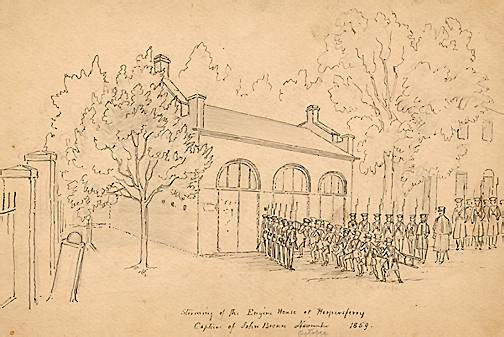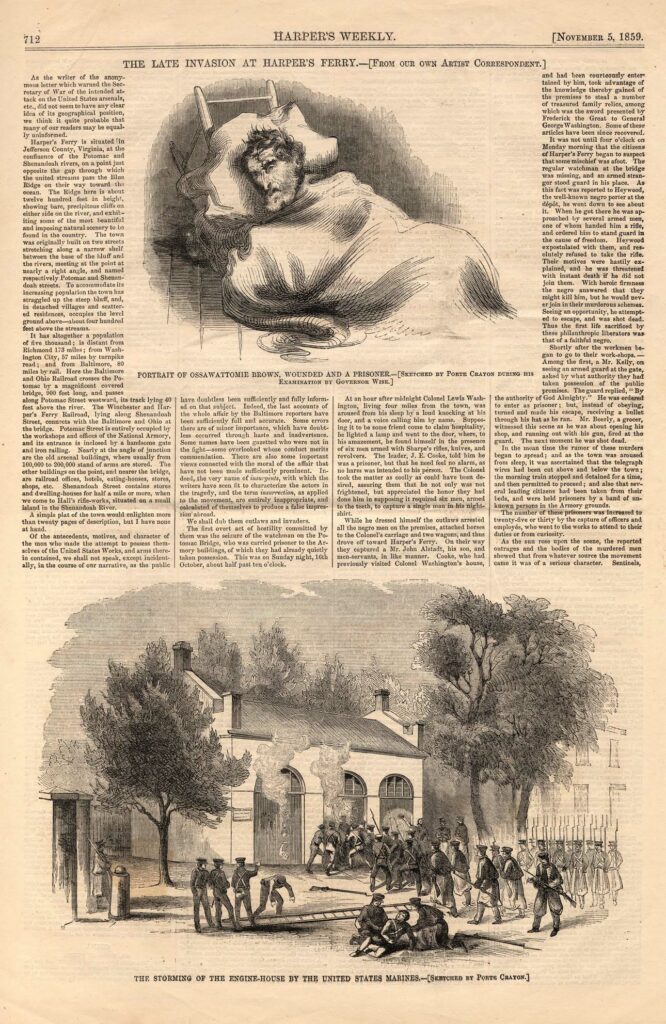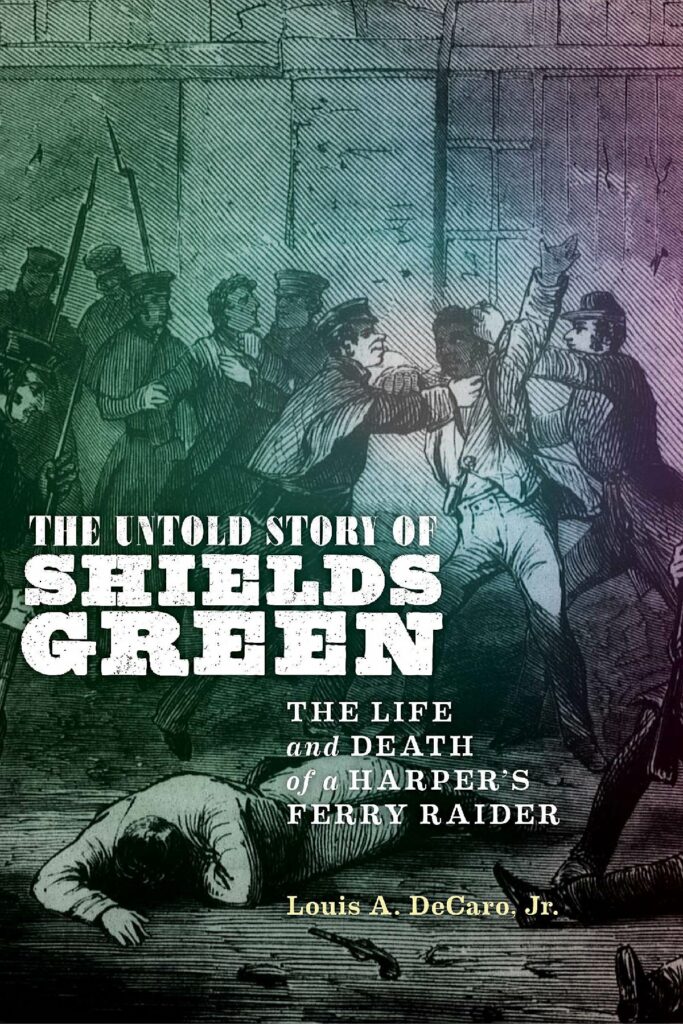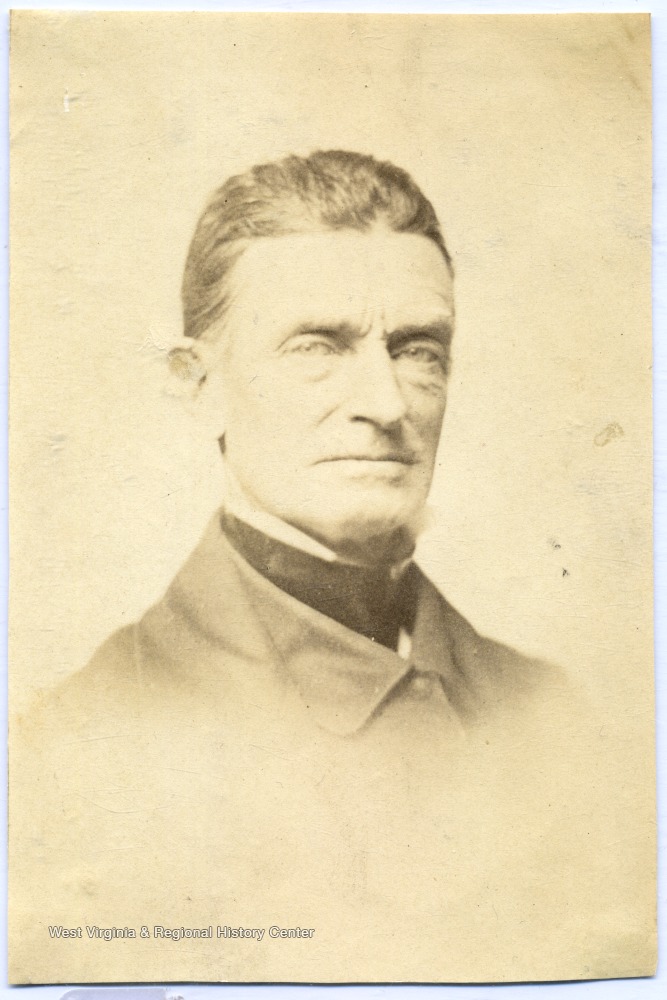This Day in History: John Brown’s Fort
Posted by Jane Metters LaBarbara.October 18th, 2021
On October 16, 1859, abolitionist John Brown and a band of his followers seized control of the Harpers Ferry Armory, a U.S. Army arsenal, in order to distribute the arms there to enslaved people in the surrounding area, to overthrow the South and free the slaves. The raiders easily captured the arsenal, but the mass uprising of enslaved people that they hoped for never came to be.
On the morning of October 18, 1859, United States forces commanded by Lieutenant Colonel Robert E. Lee stormed the armory engine-house at Harpers Ferry, where Brown and his fellows made their last stand. There, the soldiers captured Brown and the others who had barricaded themselves in the building. Of the 18-22 men Brown had started with, ten had been killed and Brown himself was wounded. Innocent people in Harpers Ferry were also killed in the initial raid.

David Hunter Strother’s collection includes multiple images of John Brown, his trial, and his execution, as well as facsimiles of “Harper’s Weekly” articles for which Strother provided the illustrations. Known then as “Porte Crayon,” Strother was a famous illustrator for his time.

Brown was found guilty of murder, treason, and inciting a slave insurrection and executed December 2, 1859.
Strother also sketched the others involved in Brown’s raid, including “Emperor” Shields Green, an abolitionist freedom-fighter and fugitive from South Carolina.

Initially, Brown’s insurrection was viewed as fanatical. It is widely reported that Frederick Douglass was invited to join the raid but he declined because he thought the plan was suicidal. During and after his trial, Brown became either a hero or a villain, depending on one’s political sympathies. The event spurred the beginning of the Civil War.






